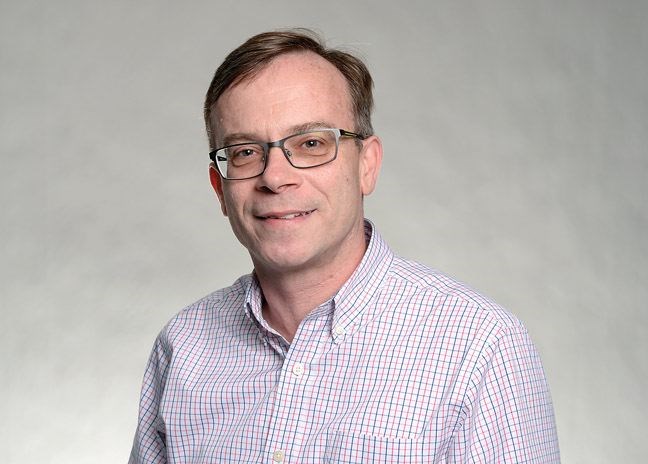The Prince George arts council called on the city for long-term funding commitments for itself and other cultural organizations.
"It's very important for us to advocate on behalf of entire art community for sustainable funding," said executive director Sean Farrell before asking for an increase in annual funding more than $8,000.
Starting in 2017, the Community Arts Council of Prince George & District (CAC) would like to see the city give $52,000, up from the current $43,800 that the city gives.
The arts council faces many challenges, Farrell explained in his presentation Monday night. Both its aging facility and aging founding members mean less support, and it faces an increased need to make the programs relevant for younger arts community members. It also needs to focus on finding diverse audiences in the face of diminishing traffic and consumers at its arts complex as well as dilution of funding.
Council heard that the CAC, Theatre North West and Prince George Symphony Orchestra all have three-year agreements with the city ending in December.
Farrell would like to see those commitments become five-year promises tied to cost of living increases for his organization, the PGSO, ColdSnap Festival and more.
Farrell said the arts council is working hard to find other ways to increase its revenue.
"We're really trying to seek out new ideas for our future and possible new programs," said Farrell, who also pointed to an ongoing crowdfunding campaign to raise funds.
The arts council has about 100 members, but Farrell said he's trying to expand their numbers by targeting new types - like graphic artists and musicians - but anyone who is "driven by a creative process has a place at the table."
Coun. Brian Skakun praised the collaborative approach to pitching investment in the arts, which he said was important to the city's social and economic fabric.
"I definitely think it's doable. Your groups need to know that there's going to be sustainable funding for X number of years so it takes off some of the pressure."
Councillors praised Farrell's approach to include other arts organizations in his request for stable funding, though he cautioned he didn't have the mandate to make a formal request on their behalf.
"It's also good to see the arts community getting defragmented," noted Coun. Albert Koehler.
Studio 2880 needs considerable work and was one of 17 facilities audited this year. A report found it needed almost $1 million in immediate work.
"There's no question that that's an aging building, the warehouse behind is virtually condemnable," said Mayor Lyn Hall, noting the facility is in "bad repair" and needs a "tremendous amount of work."
Downtown revitalization is a key step, said Farrell, who is also spoke of social strategy and opportunities to partner spaces with social housing.
"We're looking to put the community back in the community art council," said Farrell, and make the organization more accessible for those on a fixed income, the marginalized and seniors.
Theatre Northwest also gave an update to council, and though it didn't have a dollar request it did speak of funding crunches.
Its expenses are about $987,849 while the revenue is $963,200 leading to an almost $25,000 shortfall.
"This is what we're chasing after every single year," said artistic director Jack Grinhaus, who noted paying for space is a big line item, coming it at $100,000 each year.
"We're here because we want to talk about the state of the union at Theatre Northwest as we call it," explained Grinhaus, who compared the theatre to a youth who has successfully emerged from the "teenagey, angsty years" and matured into adulthood and its 23rd year.
After a lot of soul searching and self reflection the group has put together "the right team" that is both "modern and efficient."
Finding that funding balance takes some work through fundraisers, a renewed focus on new audience or group sales, its version of "tightening belts" - though this is difficult - and raising ticket prices.
The last option isn't really an option he and general manager Marnie Hamagam explained because the performer's union bases actor pay on ticket prices and ticket sales.
Even a dollar more would bump them into the higher category, forcing them to pay performers more and putting them in a position where they wouldn't make more money.
Even so, Grinhaus said the city is extremely supportive of their shows, estimating most shows have between 70 and 80 per cent of the 220 seats sold. That's a considerable jump from what he would expect to see in bigger markets like Toronto or Vancouver.
Well beyond double the national average, without question," he said.
"We still rely heavily on the box office system."
In a typical year the theatre offers four mainstage productions with 90 performances and another two "presentation series" with 15 performances
"Our focus is to be a beacon for the arts community as much as we can be."
That community is unpaid compared to their Canadian counterparts, Farrell said in his presentation.
Pointing to a Hill Strategies 2011 report, Prince George ranked 62 of 69 communities for the number of arts and cultural workers that make up the local workforce.
It took 44th spot when it came to the average amount cultural workers could expect to be paid.



